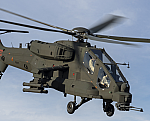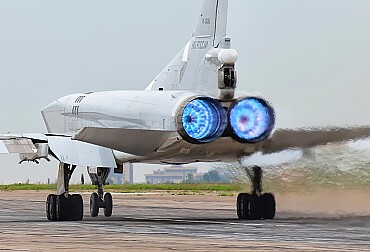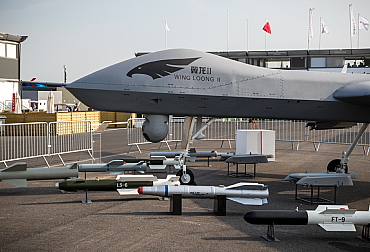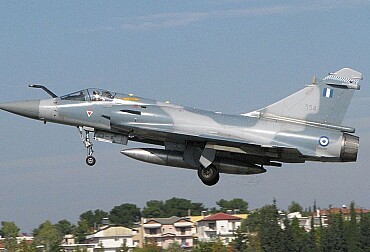Israel's war with Hamas confirms that drones are playing an increasing role in combat operations
Unmanned aerial vehicles are an indispensable element on the modern battlefield, providing both surveillance and strike capability. These systems are playing an increasingly important role in the planning and conduct of combat operations, so it is no surprise that many countries are introducing technologically sophisticated drones of various categories into their arsenals. One of the pioneers in the use of drones is Israel, particularly the Israeli Air Force. It relies heavily on the Heron family of systems developed and manufactured by Israel Aerospace Industries. These drones have also been deployed as part of Operation Iron Swords, against Hamas terrorists. In addition to the Herons, the Arrow 3 air defence system is also involved in Israel's defence.

Just a few tens of minutes after the terrorist attack by the Palestinian Hamas movement on October 7, Israeli Heron 1 and Heron TP drones flew over the Gaza Strip. Their mission was to create a comprehensive picture of the current situation in the Gaza Strip for the Israeli Defense Forces, primarily the Air Force. The information obtained by these assets was then used by Israeli generals to prepare retaliatory actions and to neutralize selected targets. Subsequently, Heron drones have assisted ground forces in pushing the invaders out of the territory of the Jewish state, and even today are actively involved in monitoring the situation around the Gaza Strip.
Herons have been successfully deployed in the Israeli Air Force for several years. They are divided into two squadrons within the Israeli Air Force. A separate 200th Squadron with Heron 1 systems is stationed at Hatzor Airbase, and Heron TP drones are stationed at Tel Nof Air Base as the 210th Squadron. Both squadrons, through Heron unmanned systems, perform surveillance, tracking and intelligence tasks at the strategic and operational level. Both systems can perform missions in all weather conditions and, with a flight endurance of approximately 48 hours, offer very detailed situational awareness and information. The Heron 1 drones are also used by the Israeli Navy for patrolling at sea.
The Heron family drones are among the technological leaders in their MALE (Medium-altitude Long-endurance) category. Israel Aerospace Industries, which develops, manufactures and improves these systems, offers a wide range of different modules for them. Both Heron 1 and Heron TP can be fitted with up to six different modules at a time. Users of these machines, of which there are more than 20 worldwide, thus have multifunctional systems that can perform multiple tasks simultaneously in different types of terrain.
The Heron systems also include a remote control station. This is equipped with advanced communications and encryption facilities that ensure the protection and distribution of intelligence information obtained from the sensors. The unified control station system also makes it easier for the drone operator to control the drone, reducing operator overload and streamlining the execution of operations.
In total, the Heron family of unmanned systems have logged more than two million flight hours, making them among the busiest and most used drones worldwide. In addition to Israel, India, Greece, Brazil, Germany, Singapore, among others, have Heron drones in their arsenal, and among non-state actors, Frontex is a user. The Czech Republic was also interested in the Heron 1 unmanned systems a few months ago, but has put the acquisition of this system on hold. Instead, it plans to procure 200 smaller drones, but these cannot be used to carry out operations at a strategic level.
Heron drones are not the only systems from Israel Aerospace Industries involved in Israel's defence. Recently, the Arrow 3 air and missile defence system was also deployed operationally for the first time against a rocket sent by the Ansar Allah movement against the Jewish state. Germany has also recently confirmed the procurement of the Arrow 3 suite and is integrating the system into a joint European air defence system called the European Sky Shield Initiative. Several enemy missiles have also been successfully defused by the Arrow 2 system.










